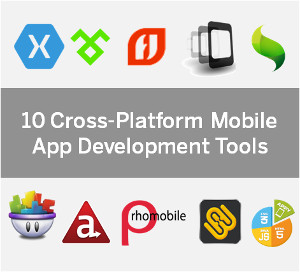Top 5 Responsive Frameworks for 2016 Compared
Framework is one of the most important development tools that help in better and faster web development. With the help of frameworks, developers can build a maintainable, well structured, and upgradable sites in less time.
Responsive Framework Feature Comparison Chart:
Bootstrap | Foundation | Semantic UI | Pure by Yahoo! | UIkit by YOOtheme | |
Creator | Mark Otto and Jacob Thornton | ZURB | Jack Lukic | Yahoo | YOOtheme |
Released | 2011 | 2011 | 2013 | 2013 | 2013 |
Popularity | 75,000+ stars on GitHub | 18,000+ stars on GitHub | 12,900+ stars on GitHub | 9,900+ stars on GitHub | 3,800+ stars on GitHub |
Core concepts | RWD and mobile first | RWD, mobile first, semantic | Semantic, tag ambivalenc, responsive | SMACSS, minimalism | RWD, mobile first |
Framework size | 145 KB | 326 KB | 552 KB | 18 KB | 118 KB |
Preprocessors | Less and Sass | Sass | Less | None | Less, Sass |
Responsive | Yes | Yes | Yes | Yes | Yes |
Modular | Yes | Yes | Yes | Yes | Yes |
Starting templates | Yes | Yes | No | Yes | Yes |
Icon set | Glyphicons Halflings set | Foundation Icon Fonts | Font Awesome | None. You can use Font Awesome instead | Font Awesome |
Add-ons | None bundled, but many third-party plug-ins are available | Yes | No | None | Yes |
Unique components* | Jumbotron | Icon Bar, Clearing Lightbox, Flex Video, Keystrokes, Joyride, Pricing Tables | Divider, Flag, Rail, Reveal, Step, Advertisement, Card, Feed, Item, Statistic, Dimmer, Rating, Shape. | None | Article, Flex, Cover, HTML Editor |
Documenta- tion | Good | Good. Many additional resources are available | Very good. Semantic offers a well organized documentation, and separate site to offer guides for getting started | Good | Good |
Customization | Basic GUI Customize. No color picker available, you have to input the color values manually | No GUI customizer, only manual customization | No GUI customizer, only manual customization | Basic GUI Skin Builder | Advanced GUI Customizer |
Browser support | Firefox, Chrome, Safari, IE8+ (you need Respond.js for IE8) | Chrome, Firefox, Safari, IE9+; iOS, Android, Windows Phone 7+ | Firefox, Chrome, Safari, IE10+ (IE9 with browser prefix only), Android 4, Blackberry 10 | Latest versions of Firefox, Chrome, Safari; IE7+; iOS 6.x, 7.x; Android 4.x | Chrome, Firefox, Safari, IE9+ |
License | MIT | MIT | MIT | Yahoo! Inc. BSD | MIT |
*unique components means they are unique compared only to the frameworks given in this list.
Bootstrap
At present, Bootstrap is an undisputable leader in responsive frameworks. With right responsive web design tools, this framework helps in building successful websites. Given its enormous recognition and acceptance, which is still rising every single day, you can be confident that this amazing toolkit will not fail you, or make you alone on the way of creating successful websites.
The key strength of Bootstrap is its massive popularity. Technically, it is not superior to the other frameworks in the list; however, it offers a lot more resources (third-party plug-ins, articles and tutorials and theme builders, and so on) than other four frameworks put together. In a nutshell, Bootstrap is everywhere and this is the key reason people continue to pick this framework.
2. Foundation by ZURB
Zurb’s Foundation is the second most popular and demanding framework in this comparison. With a solid backing of company like ZURB, this framework has many positive points. After all, it is used on many big websites including Mozilla, Facebook, Yahoo!, Ebay, and National Geographic, to name a few.
Foundation is a great framework with business support, consulting and training offered. In addition, it provides many resources to help you use and learn the framework easier and faster.
3. Semantic UI
Semantic UI makes building websites much more semantic. This framework makes use of natural language principles; hence, making the codes more understandable and readable. It is full-featured and the most innovative framework among those mentioned here. The overall structure of this framework and the naming conventions also surpasses the other frameworks mentioned here.
4. Pure by Yahoo!
Pure by Yahoo! is a lightweight, modular framework which is written in pure CSS. It includes various components that can be used separately or together depending on your requirements. Pure provides only bare-bones styles for clean start of project. It is an ideal framework for people who do not require a fully featured framework but specific components to include in their project.
5. UIkit by YOOtheme
UIkit is a intelligent collection of easy-to-customize and easy-to-use components. Although it is not as famous as other frameworks in this list, it offers the same functionality and designing website with UIkit is quite easy. This framework is successfully used in many themes of WordPress. It offers a powerful and flexible customization mechanism, either manually or via GUI customizer.
Wrapping Up:
No doubt, with rise in smartphones and tablets the demand of adaptive and responsive websites are increasing everyday. Therefore, there is a fierce competition in developing the best responsive websites. Choosing right framework is quite important for the success of website. I’m sure after reading this blog post, you will be able to choose the ideal framework for your website. If you are still not sure about the right framework, you can contact some good web development companies to get consultation about the most suitable framework.


 Mark
Mark








Thanks for this article Its very impressive Hire app designer
I also use bootstrap framework... It is great... but foundation is also good and have many good features... Nice article... excellent comparison... thankx mark...
Great Post! Undoubtedly Bootstrap is the most used responsive framework. 95% of the responsive web or mobile themes available online use bootstrap framework.